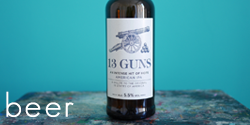
Laverstoke Mill, Bombay Sapphire Distillery, designed by Heatherwick Studio



Everyone has a different source of inspiration. Mat – for instance – has a proper love for inhouse magazines, which you’ll see popping up on more or less any post he does about weekend relaxing or long train journeys.
My inspiration comes mainly from those people I follow online. Those folks who regularly post content that captivates me for longer than the usual split-second, opens my mind a little, and leaves me slightly jealous of their creative eye and ability. I can’t name check everyone here; but, folks like our friend Jordan and our very own Yasumi definitely deserve a mention – their ability to capture different angles and interesting details in everyday objects is impressive beyond belief.



And then there’s Haarkon; an account I’ve been following religiously for the past few months, checking in every time they have a new Instagram post or blog. These guys have an incredible eye and their content – focused almost exclusively on indoor plant life – has a hauntingly beautiful quality that will stop you in your tracks.
Recently, I tried to mimic their style with my own pic (hey – imitation is the sincerest form of flattery!) – and then, when the opportunity came to visit the glasshouses at the Bombay Sapphire distillery, I saw my chance to try and emulate them just a little more.
I’m sure many people reading this will have caught a glimpse of the Bombay Sapphire distillery before. It features two striking glasshouses, designed by Heatherwick Studio (the guys behind the new London Routemaster bus), that seem to grow from the bed of the river that runs through the distillery. Twisting and turning their way into the red brick buildings of this former paper mill, it’s as if these glasshouses are an integral part of the gin making process, drawing up the water for the gin and imparting the essence of the plants they house as it sweeps passed.
They aren’t directly part of the process; but, the glasshouses are a perfect reflection of the gin making method, where a neutral spirit is transformed into something flavourful through the introduction of various botanicals; which – in the case of Bombay Sapphire – include liquorice, orris root, angelica, coriander, grains of paradise, and five others.


















































